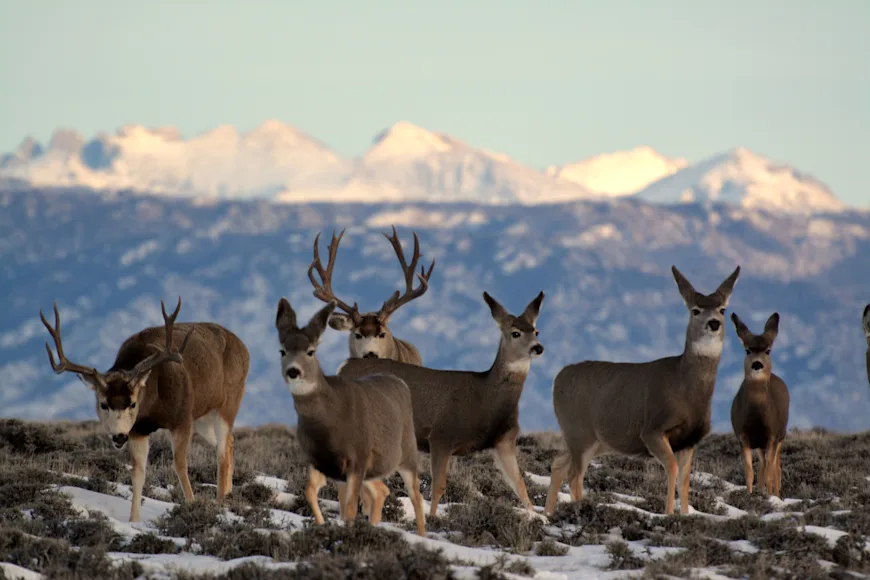On March 27, the Bureau of Land Management (BLM) released permitting plans for exploratory mining activities on public lands in southeastern Oregon. According to hunters in the Beaver State, the mining activities would take place in one of Oregon's most highly sought mule deer units—an area that is also home to sage grouse, chukars, and pronghorn antelope.
After an unusually short 5-day comment period that closed yesterday, the BLM is now extending the public input deadline—just as many hunters in Oregon and beyond are learning about the impacts that lithium mining could have on the area’s prized game populations. "There are major concerns with this project," Tyler Dungannon, the Conservation Coordinator for the Oregon Hunters Association tells Field & Stream. "In this area, you have the most highly coveted mule deer hunt in the state of Oregon. The Trout Creek Mountains is a hunt that everybody strives for."

The BLM described certain facets of the proposed mining activity in a public notice on its website. "The Bureau of Land Management is seeking public comment on a proposal to explore for lithium in the McDermitt Caldera near Nevada in Malheur County, Oregon," the notice reads. "If approved, HiTech Minerals Inc. could modify approximately 100 acres with 267 exploration drill sites across 7,200 acres of public lands."
Dungannon says OHA staff combed through as much of the BLM's environmental assessment as they could in the five days before the initial comment period ended, but they need more time to fully digest project details and potential impacts to big game and upland birds. Of particular concern to Dungannon is a proposal to construct 30 miles of new roads inside the BLM-managed portion of the Trout Creek Mountain hunt unit.
"That enhances risk of invasive species spread," he says. "We have a major issue in this area—and in all of eastern Oregon in the Great Basin—with ventenata dubia, cheat grass, and medusa head. This project has the potential to make that worse."

Dungannon, a wildlife biologist by training, says the invasive annual grasses rapidly displace high quality forage that pronghorn, sage grouse, and mule deer depend on. "Those are the focal species that we’re concerned about with this project," he notes.
The BLM says HiTech Minerals Inc. would use the new roads "for seasonal drilling from July through November for up to five years." According to Oregon Live, HiTech Minerals Inc. is a subsidiary of Jindalee Lithium, which is headquartered in West Perth, Australia.
Dungannon says he doesn't know much about the scope or scale of the full mining operation that the Australian-based company hopes to bring to fruition on public lands in the Oregon desert. "I’m not sure that many people do," he adds. "It’s an area that’s rich with minerals, and lithium is the hot-ticket item right now."
With the BLM's extension, he's hoping more hunters and conservation groups will submit comments to the agency in the coming days. "Our hope is to drive this project in a way that takes wildlife into consideration and takes hunters into consideration," he says. "Federal lands are by definition designed for multiple use. But we shouldn’t be allowing projects that harm habitat for wildlife, and that negatively impact hunters and the game we pursue on public lands."

It's not clear why the BLM introduced the unusually short five-day comment period only to extend it this morning. The agency's public notice came seven days after President Trump signed an Executive Order invoking the Defense Production Act to encourage more private mining on federally managed public lands. According to a BLM spokesperson contacted by Field & Stream, the extended comment period will run through April 25.
Read Next: New Executive Order Could Threaten Public Hunting and Fishing Lands, Including the Boundary Waters
"In response to the initial five-day comment period, OHA and many other organizations moved at Mach speed to articulate comments on this project’s 100+ page environmental assessment to ensure impacts to wildlife and habitat are accurately measured and considered," says Dungannon.
"Now organizations and individuals will have 25 additional days to submit comments enabling those to dig deeper into the details of this project. While the full impacts are unknown, they're unlikely to be positive, even with substantial mitigation from this project. And heaven forbid they put a full-blown lithium mine in a migration corridor."
You can comment on the proposed project here.


